Alum Allison Glenn and the Power of Listening

Allison Glenn. Photo courtesy of Rana Young
Allison Glenn. Photo courtesy of Rana Young
by Joe Giovannetti
For School of the Art Institute of Chicago (SAIC) alum Allison Glenn (Dual MA 2012), the art of curation is about collaboration. So, when she was asked to helm an exhibition in Louisville, Kentucky, honoring the life of Breonna Taylor, Glenn knew what she needed to do: listen.
Glenn, the incoming senior curator and director of public art at Contemporary Arts Museum Houston, served as the guest curator of Promise, Witness, Remembrance at Louisville’s Speed Art Museum earlier this year. Anchored by a portrait of Taylor by Amy Sherald, the exhibition reflected on Taylor’s life, her killing in 2020, and the local and national protests that ensued in the following year. The three titular words were developed from a conversation with Glenn and Tamika Palmer, Taylor’s mother and—as Glenn describes—the exhibition’s key stakeholder.
“I built my relationship with her slowly, and with respect, in the most gentle way I could,” said Glenn. “We had a text message exchange … I said, there’s so much this exhibition cannot do, but what does it mean to you and your daughter’s legacy? She told me what the exhibition meant to her, and from that text exchange is how I kind of extrapolated the three words.”
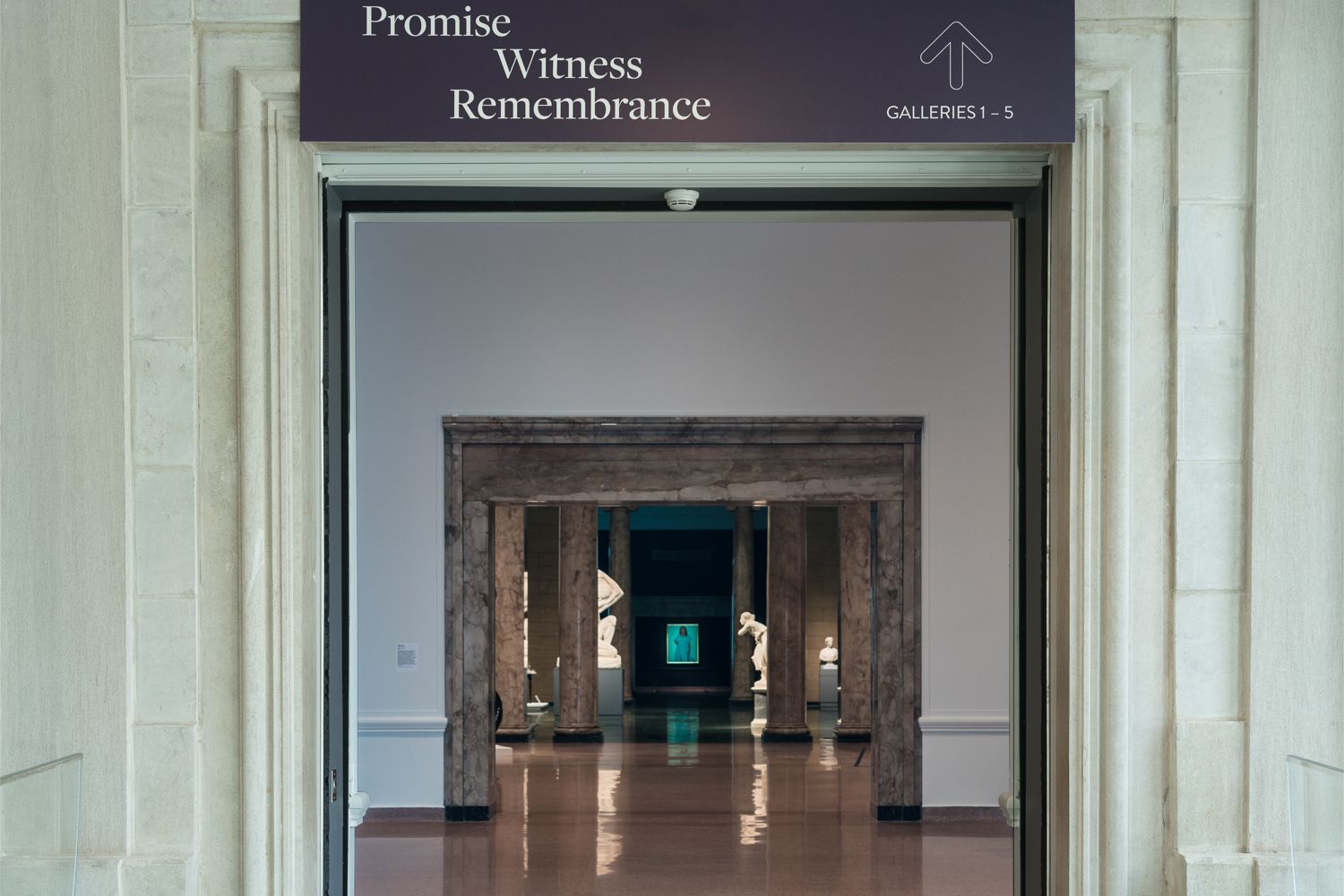
The entrance to Promise, Witness, Remembrance. Photo courtesy of Bill Roughen
The entrance to Promise, Witness, Remembrance. Photo courtesy of Bill Roughen
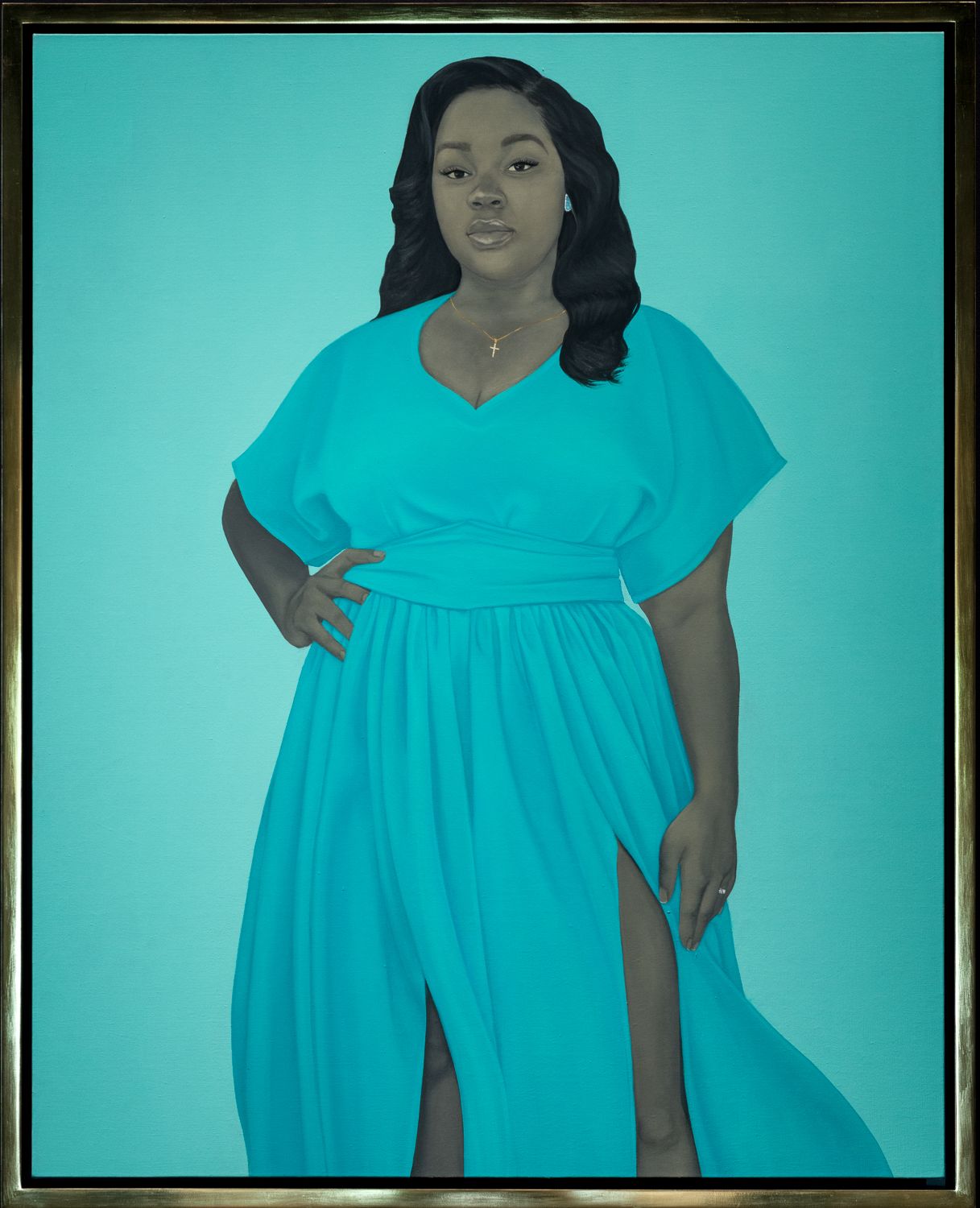
Amy Sherald, Breonna Taylor, 2020, oil on linen, 137.2 x 109.2 cm / 54 x 43 in, © Amy Sherald. Photo courtesy of Bill Roughen
Amy Sherald, Breonna Taylor, 2020, oil on linen, 137.2 x 109.2 cm / 54 x 43 in, © Amy Sherald. Photo courtesy of Bill Roughen
After her first conversation with Palmer, Glenn immediately convened a national advisory panel made up of artists and filmmakers—including Theaster Gates (HON 2014), who previously worked with Tamir Rice’s mother to preserve the gazebo where Rice was killed—arts administrators and historians, and relatives of Alton Sterling and Trayvon Martin who, like Taylor, also fell victim to police violence. Glenn worked alongside additional members of Taylor’s family, a Steering Committee of Louisville community members, local and national artists, and the Speed Art Museum staff to strike the right tone for this massive undertaking.
“I quickly found out that there was a lot of ambition,” said Glenn. “The museum staff was excited about what this exhibition could do.”
“To actually listen … might mean you have the opportunity to pivot toward ideas that, overall, can have a stronger impact.”
For Glenn, who is not from Louisville, local community involvement was critical. In one of her first meetings with the Louisville Steering Committee—convened by the Speed Museum’s community engagement strategist Toya Northington—they asked Glenn to incorporate new elements, including a suggestion that the exhibition have more color to reflect Taylor’s spirit. “I knew that was coming very, very much from people who were close to her, and cared for her. And so, I wanted to honor it,” said Glenn.
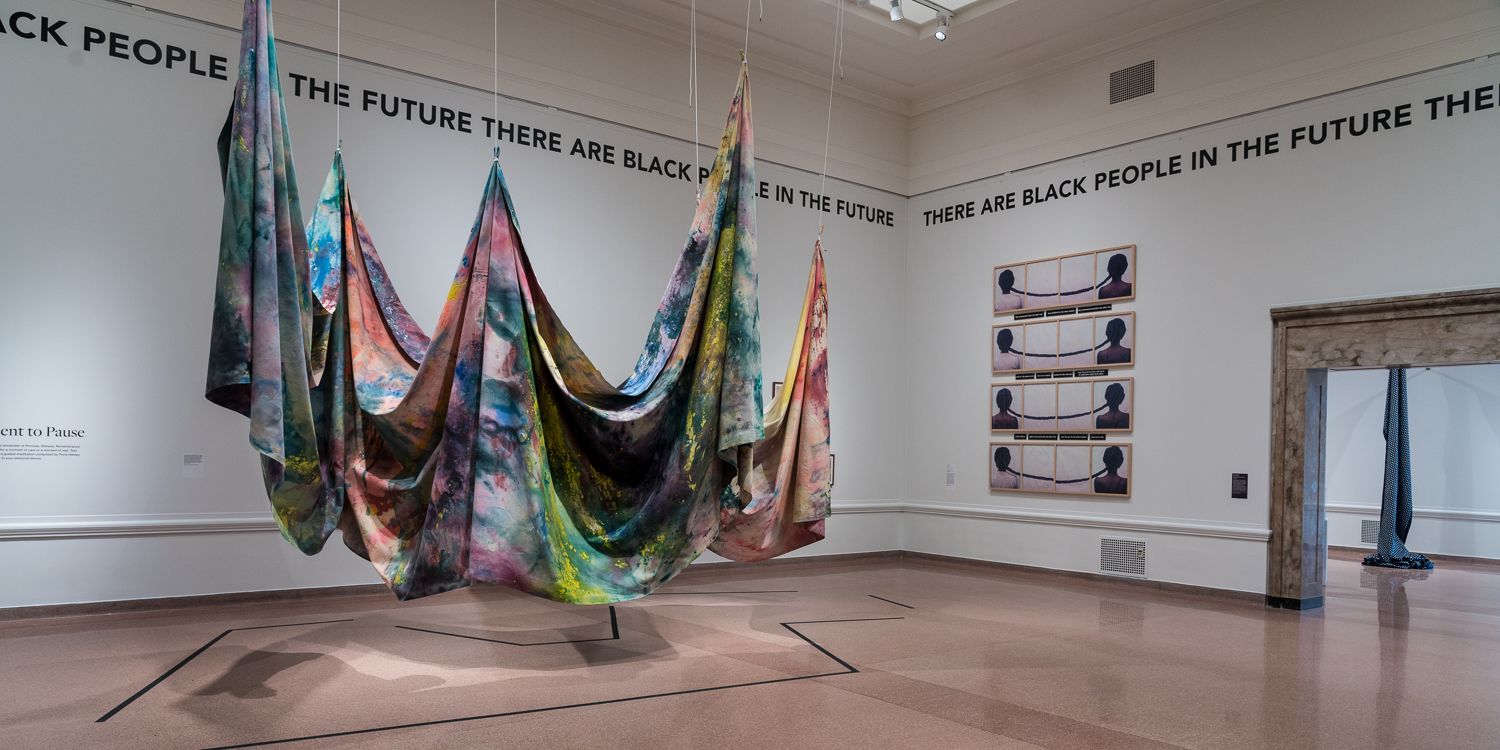
Left: Sam Gilliam, Carousel Form II, 1969, acrylic on canvas, 120 x 900 in. Right: Lorna Simpson, Same, 1991, 16 color Polaroids in four frames with 11 plastic plaques. Photo courtesy of Bill Roughen
Left: Sam Gilliam, Carousel Form II, 1969, acrylic on canvas, 120 x 900 in. Right: Lorna Simpson, Same, 1991, 16 color Polaroids in four frames with 11 plastic plaques. Photo courtesy of Bill Roughen
The impact of this suggestion is deeply felt in the artwork chosen for the exhibition. Sam Gilliam’s Carousel Form II (1969), a 120 by 900 inch fabric canvas created during the civil rights movement, is covered with swirls of colorful acrylic. Stephanie and Bill Sick Professor of Fashion, Body and Garment Nick Cave’s Unarmed depicts a cast of Cave’s hand, formed as if shooting a gun, surrounded by a multicolored wreath of flowers. Butterfly Eyes (for Breonna Taylor) by María Magdalena Campos-Pons, a striking mixed-medium piece bursting with botanical reds, oranges, and purples, connects to the beauty and goodness of Taylor’s spirit, which the artist believes is still with us. Even the exhibition walls tell a story: a deep purple hue named galaxy black was chosen as a nod to one of Taylor’s favorite colors.
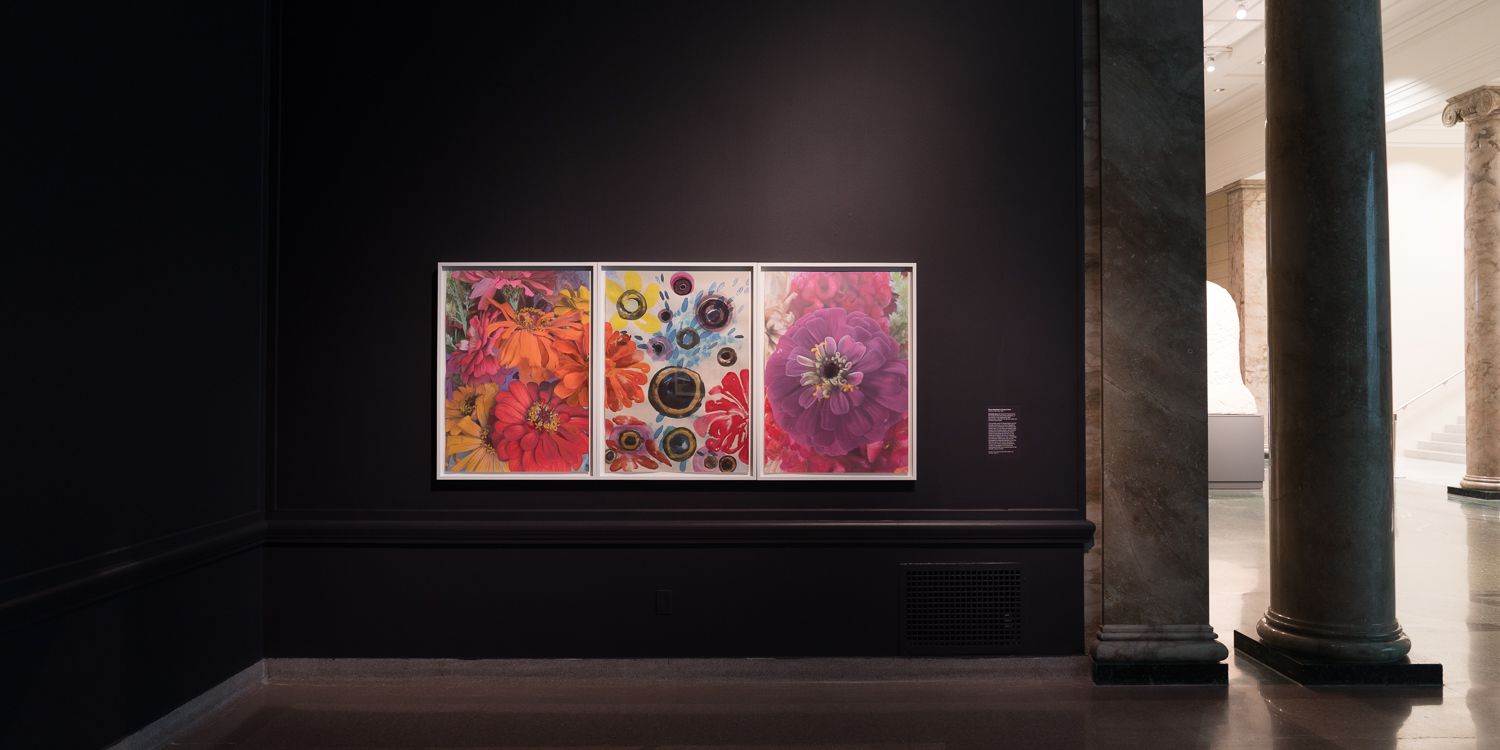
María Magdalena Campos-Pons, Butterfly Eyes (for Breonna Taylor) from the series In the year of the pandemic, in the month of the awakening, 2021, Mixed medium, watercolor, ink, gouache, digital print on arches archival paper. Photo courtesy of Bill Roughen
María Magdalena Campos-Pons, Butterfly Eyes (for Breonna Taylor) from the series In the year of the pandemic, in the month of the awakening, 2021, Mixed medium, watercolor, ink, gouache, digital print on arches archival paper. Photo courtesy of Bill Roughen
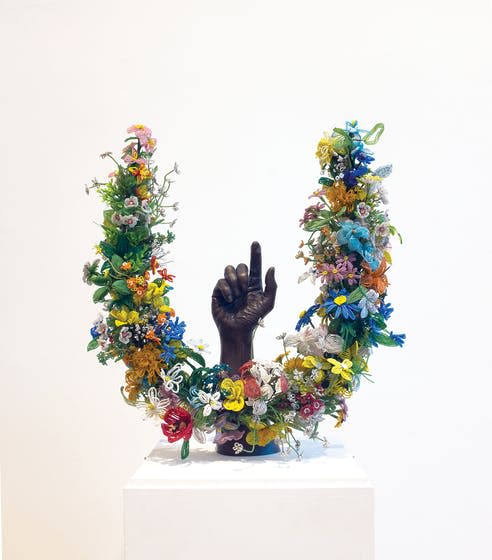
Nick Cave, Unarmed, 2018, sculpture, cast bronze, metal, and vintage beaded flowers. Image courtesy of the artist
Nick Cave, Unarmed, 2018, sculpture, cast bronze, metal, and vintage beaded flowers. Image courtesy of the artist
This is just one example of the ways that Glenn worked with the community to make Promise, Witness, Remembrance a true collaborative effort. Throughout the process, Glenn frequently returned to the idea of decentering, which she believes is the key to a level of true listening that allows a person—or institution—to create an environment anchored in trust.
“The practice of decentering is an ongoing practice, and if you are doing the work to decenter from the traditional western cannon or framework … you might have to get a little uncomfortable. You might not have all the answers. There were moments of discomfort for me, which absolutely led to complete growth, and moments where I was humbled. But, to actually listen … might mean you have the opportunity to pivot toward ideas that, overall, can have a stronger impact.”
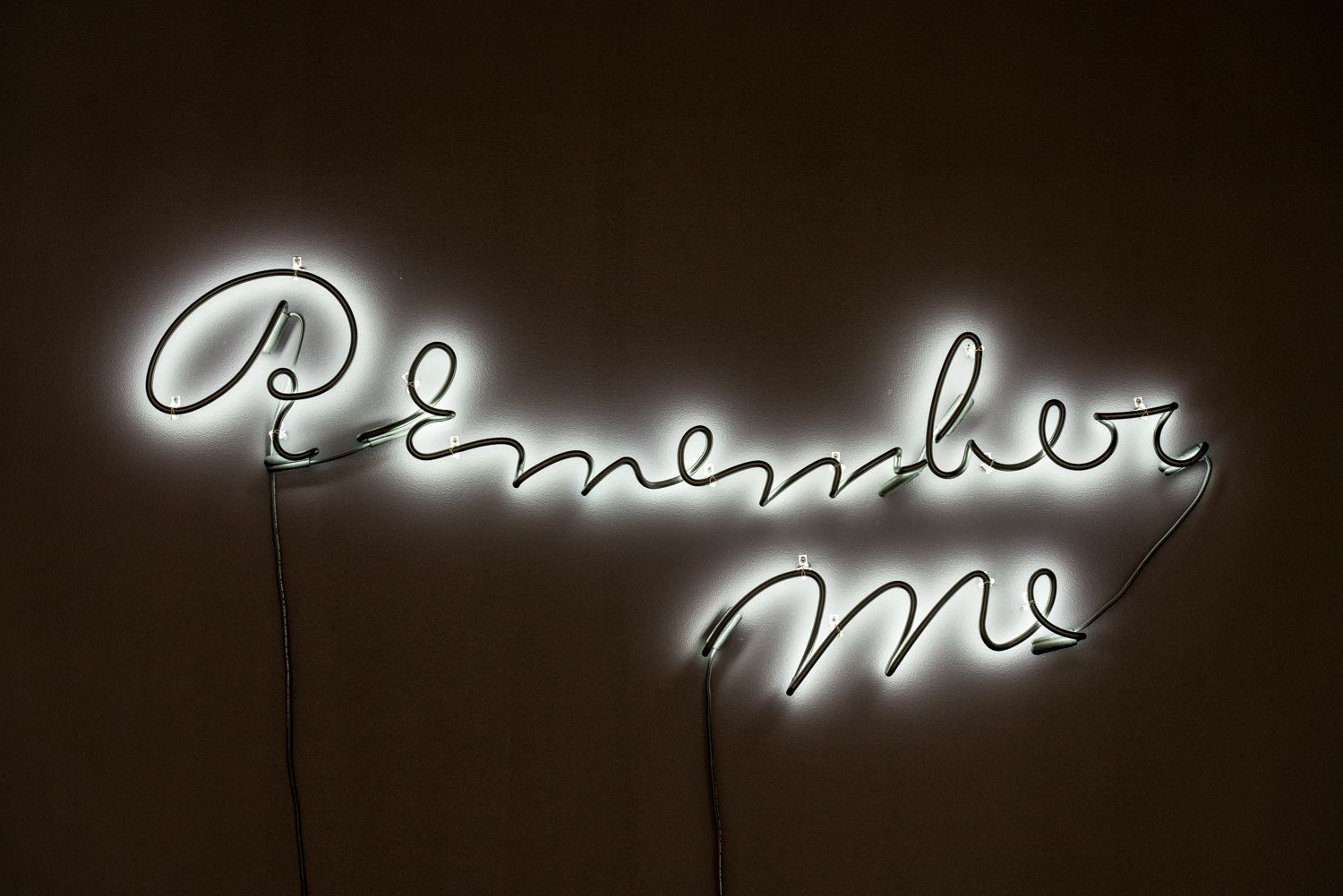
Hank Willis Thomas, Remember Me, 2014, neon, © Hank Willis Thomas. Photo courtesy of Bill Roughen
Hank Willis Thomas, Remember Me, 2014, neon, © Hank Willis Thomas. Photo courtesy of Bill Roughen
As a result, Promise, Witness, Remembrance has been touted by critics as an exemplary model for museums that aim to respond to the current moment and, in doing so, deepen their connection to their audiences and community. Ultimately, the experience has strengthened Glenn's belief that listening is liberation.
“Letting go of, perhaps, what success is, or expanding what success can be … it’s freeing. [If you] align your values with your practice, and where you show up best, with your core goals, you might just find that you show up in the best possible way.” ■
